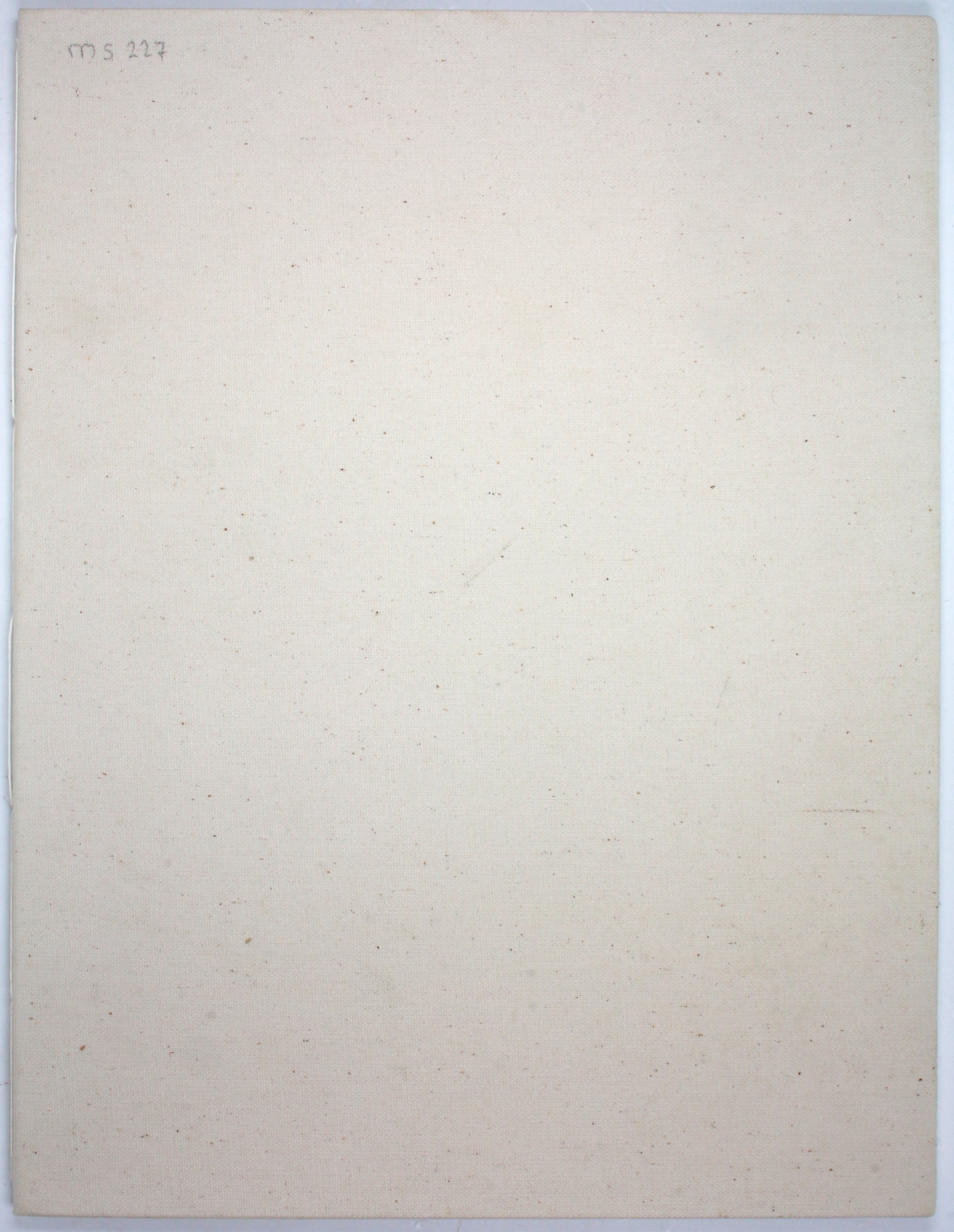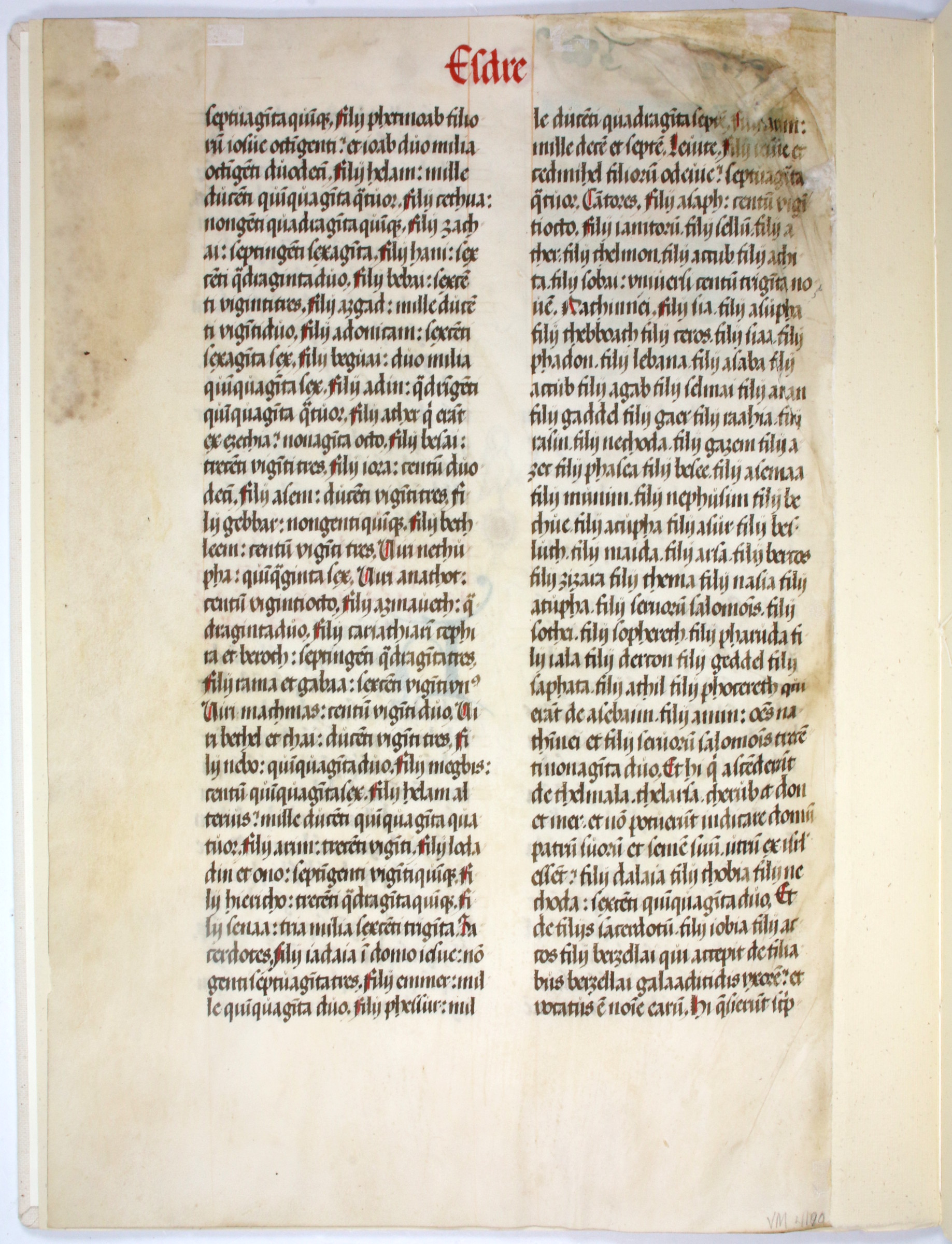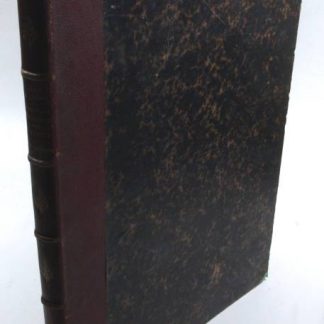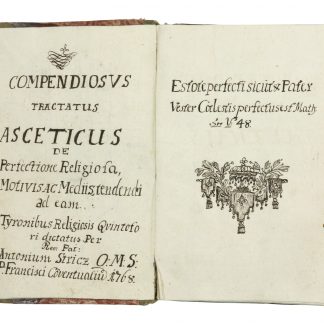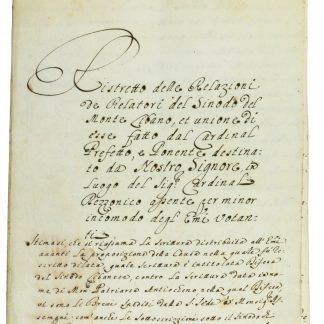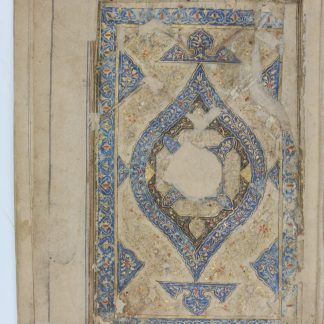Illuminated initial: constructing the Temple of Jerusalem
[Illuminated manuscript leaf].
Folio (277 x 416 mm). Single leaf. Illuminated manuscript on vellum. Two columns of gothic script with large illuminated capital, large blue initial, rubricated titles and sections, and inked marginal decoration. Bound into modern cream cloth (320 x 418 mm).
€ 18,000.00
Overflowing with gold, King Cyrus directs the construction of the Temple of Jerusalem in this elaborately illuminated initial from the leaf of a Latin Bible, ca. 1507. The leaf comprises Ezra 1:1-2:62, Chapter Two being preceded by a four-line rubric from Bede's commentary on Nehemiah and Ezra (Migne, PL , XCI, 1850, col. 817). It is dominated by this flamboyant and unusual scene of Cyrus flanked by councillors, and features four more roundels of gilt in the margins (a little inked heron perches upon one) with distinctive inked marginal decorations of the late 15th and early 16th century. The product of skilled craftspeople, both the illuminated scene and the gothic bookhand are very fine, on high quality vellum.
Variously attributed to Austria or Germany (Augsburg in particular), this leaf is generally accepted to be the product of a Cistercian or Carthusian house, based on the scribal use of the punctus flexus. Remarkably, this leaf can also be narrowly dated: originally part of a multi-volume Latin Bible, the first volume, containing Genesis-Ruth, survives intact (Baltimore, Walters Art Museum, MS W.805), and includes a scribal date of 1507. When catalogued in the Schøyen Collection, it was tentatively suggested that this Bible, and thus this leaf, could be sourced to Augsburg, and specifically to St. Ulrich's and St. Afra's Abbey. This corresponds to the 1987 Ferrini catalogue's attribution of this leaf to Augsburg; Ferrini also drew comparisons to the work of the illuminator Leonhard Beck and scribe Leonhard Wagner. Stylistically, its palette of pinks, greens, blues, and stocky but animated figures does suggest an origin in the German-speaking principalities at the dawn of the 16th century.
I. The scriptorium of a Cistercian of Carthusian house in what is now Austria or Germany, possibly the Benedictine Abbey of SS. Ulrich and Afra, Augsburg.
II. Otto F. Ege (1888-1951); No. 44 in Ege's 'Fifty Original Leaves' portfolios; another leaf with an historiated initial was sold among the Ege residue at Sotheby's, 26 November 1985, lot 86.
III. Bruce Ferrini (1950-2010), inscribed in pencil with his stock number 'VM 4190'.
IV. Schoyen Collection, MS 227, with bookplate.
Faint dampstain in upper fore-edge margin; similar dampstain on upper gutter margin with small closed tear and very subtle repairs; in excellent condition, with particularly bright and un-rubbed illumination.
Schøyen MS 227. Scott Gwara, Otto Ege's Manuscripts, Handlist 2013, no. 44. Bruce Ferrini, Catalogue 1, Important Western Medieval Illuminated Manuscripts (1987), No. 34.


